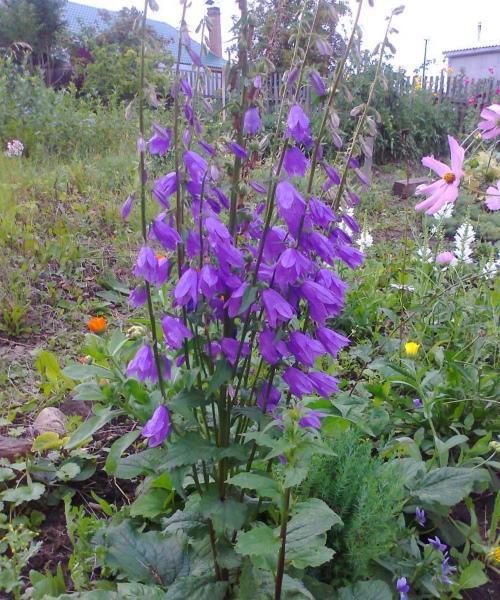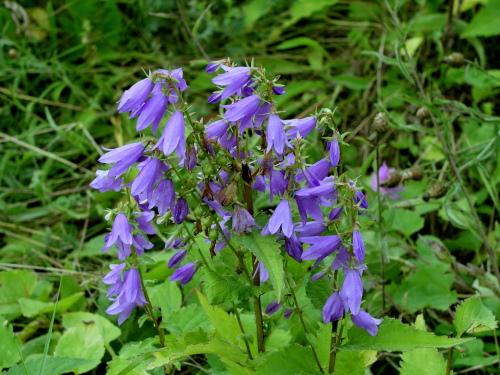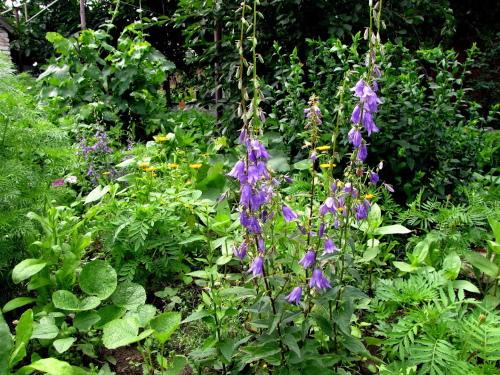Rapunzel bell - beauty and benefit in one plant
 Many "wild" and field plants have successfully taken root and do well in flower beds and in front gardens. Their beauty is not gorgeous, but simple, and this is touching, and such flowers are also distinguished by their unpretentious nature. One of them is a rapunzel-shaped bell. Its violet-blue flowers hang gracefully from a long brush. Moreover, it also has medicinal properties. What is not an ideal flower for the garden?
Many "wild" and field plants have successfully taken root and do well in flower beds and in front gardens. Their beauty is not gorgeous, but simple, and this is touching, and such flowers are also distinguished by their unpretentious nature. One of them is a rapunzel-shaped bell. Its violet-blue flowers hang gracefully from a long brush. Moreover, it also has medicinal properties. What is not an ideal flower for the garden?
Description of the plant

Being a herbaceous perennial, in well-lit areas, the bell can reach 1 m in height. The plant forms erect stems with a ribbed surface, empty inside. The leaves are characterized by a decrease in the size of the leaf plate. The higher the stem, the smaller and narrower the leaves. Both shoots and leaves are covered with hard pubescence. The root system is a powerful plant, deeply embedded in the soil, with lateral branches.
The bell blooms all summer, releasing a long brush, on which flowers hang on one side. Their diameter is not more than 3.5 cm, pedicels are short. The main color of the flowers is violet, with a blue tint. Closer to autumn, seeds ripen in boxes. In the first year of life, a young bush grows a leafy rosette and a central root - a rod. The next season, buds wake up on it and give new roots and rosettes.
In natural conditions, the plant can be found along roads and fields, on forest edges and wastelands. In Russia, the flower is under the protection of the Red Book in many areas.
Rapunzel Bell - Where Used
 Slender bushes are unpretentious and can grow almost anywhere. This plant can rightfully be called universal. It has a wide range of uses, from gardening and cooking to medicine, namely:
Slender bushes are unpretentious and can grow almost anywhere. This plant can rightfully be called universal. It has a wide range of uses, from gardening and cooking to medicine, namely:
- Bells blooming all summer will decorate the garden, both in group and single compositions.
- Some gourmets add young juicy leaves and roots to vegetable salads.
- He enjoys the aboveground part of flowers and cattle. Juicy greens increase milk yield in goats and cows.
- Roots and shoots with foliage contain many nutrients. Warts are removed with fresh bell juice. A decoction of the roots helps in the treatment of formations in the oral cavity.
When planning to grow a bell, it should be borne in mind that this is a rather aggressive crop. On a large site, he has enough space. But if the size of the garden is modest, and there are still other plants, over time it can crowd out its neighbors.
Growing perennial bells - video
https://www.youtube.com/watch?v=ZGInMqbe-8E